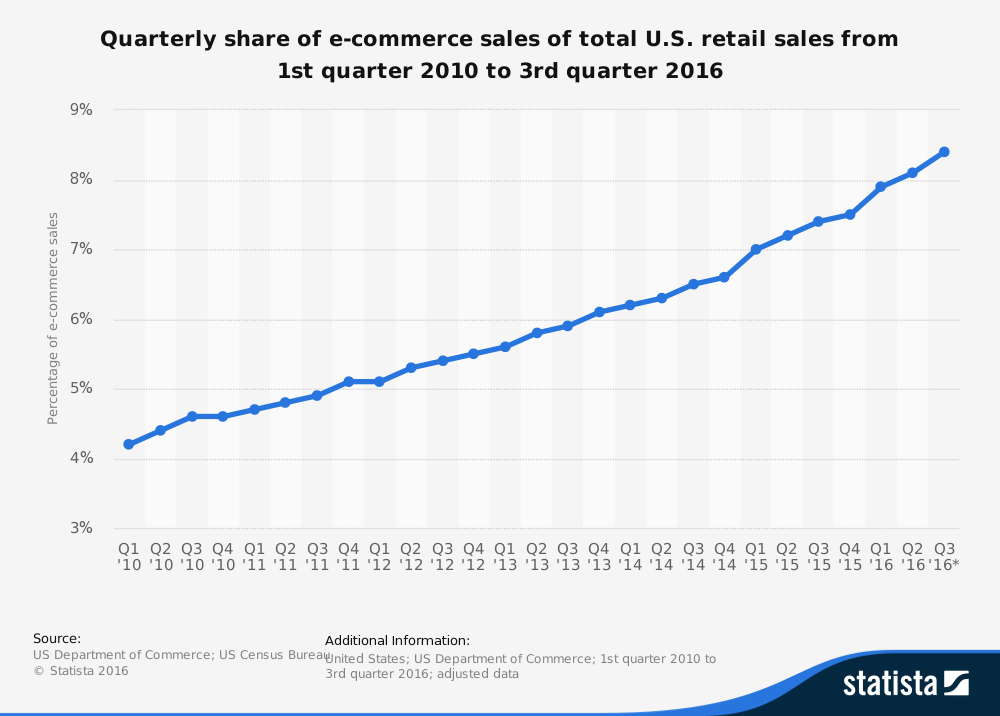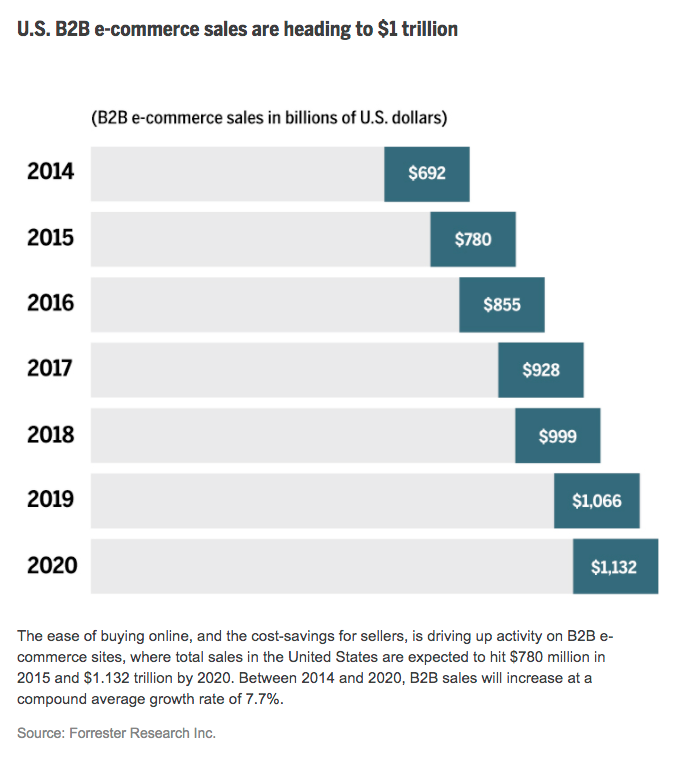What B2B e-commerce can learn from consumer retail

The world of consumer retail is in the midst of rapid transformation.
Traffic in brick-and-mortar stores is decreasing. Consumers are moving away from shopping malls. Traditional advertising—whether via direct mail, TV ads or newspaper and magazine ads—is losing its relevance.
Meanwhile, e-commerce is on the rise. In 2010, e-commerce accounted for more than 4 percent of retail sales. By 2016, that number had risen to more than 8 percent. eMarketer now predicts that worldwide e-commerce sales will reach more than $4 billion by 2020.

As a result, companies engaged in e-commerce are in a dog-eat-dog fight for sales and consumer growth. This has led to ferocious competition, frantic discounting and eroding margins as companies compete to move merchandise off shelves as quickly as possible.
The connection to B2B
So, what’s this got to do with B2B companies?
Namely, there are parallels between what’s already happened to B2C and what’s about to take place in B2B. That is, e-commerce is playing an increasingly more dominant role in the B2B sales.
Therefore, there is a lot that B2B companies can learn from consumer retail companies. They can learn from the successes that many retailers have had with e-commerce. They can also learn what the shift to online and mobile shopping can mean for their business.
The good news is, e-commerce holds a lot of potential for B2B companies. Forester Research predicts that B2B e-commerce sales already dwarf B2C sales. B2B sales are also rising much faster and are projected to reach $1 trillion by 2020.

Building an effective e-commerce site
One of the key lessons for B2B businesses is how to build an effective e-commerce site.
Many B2B businesses run their e-commerce sites like an online catalog or information site about their products and services. The website might look like it was designed as an afterthought. Or site visitors may have trouble figuring out how to find or buy something. The product is there. It has a price. You can add it to the cart and purchase it. But only after figuring out how to find it. That’s asking too much of a potential customer.
Instead, B2B businesses need to follow the lead of B2C companies when showcasing their products and services online. For example, a B2B company needs to make sure that it’s easy for customers to buy their products. They should create big, colorful buttons that say “Buy Now.” They should include specific descriptions and benefits of the product help. They should use multiple photographs, videos or downloadable fact sheets help turn shoppers into buyers.
Little ‘window shopping’ in B2B
B2B companies can, of course, use a their website to tell their brand story. However, an e-commerce site should primarily work in service of the business, not in service of its branding or promos. The site needs to sell something to provide an ROI. If you’re not selling, you’re telling—and words aren’t for sale.
Keep this in mind: A visitor comes to a site to explore a purchase or make a purchase. Above all, you should give them the opportunity to buy something. Unlike retail, in B2B, there isn’t a lot of window shopping.
The faster your website is built for transactions, the faster your sales will increase.
Read more: How much should you spend on marketing in 2017
Category: Marketing
Tags: b2b, Chief Outsiders, ChiefOutsiders, e-commerce, Sales & Marketing


Thanks Jay. You’re one of the few digital experts who really get business. You’ve given us something to think hard about. And enough data on the trends to realize we need to move quickly! Thanks!